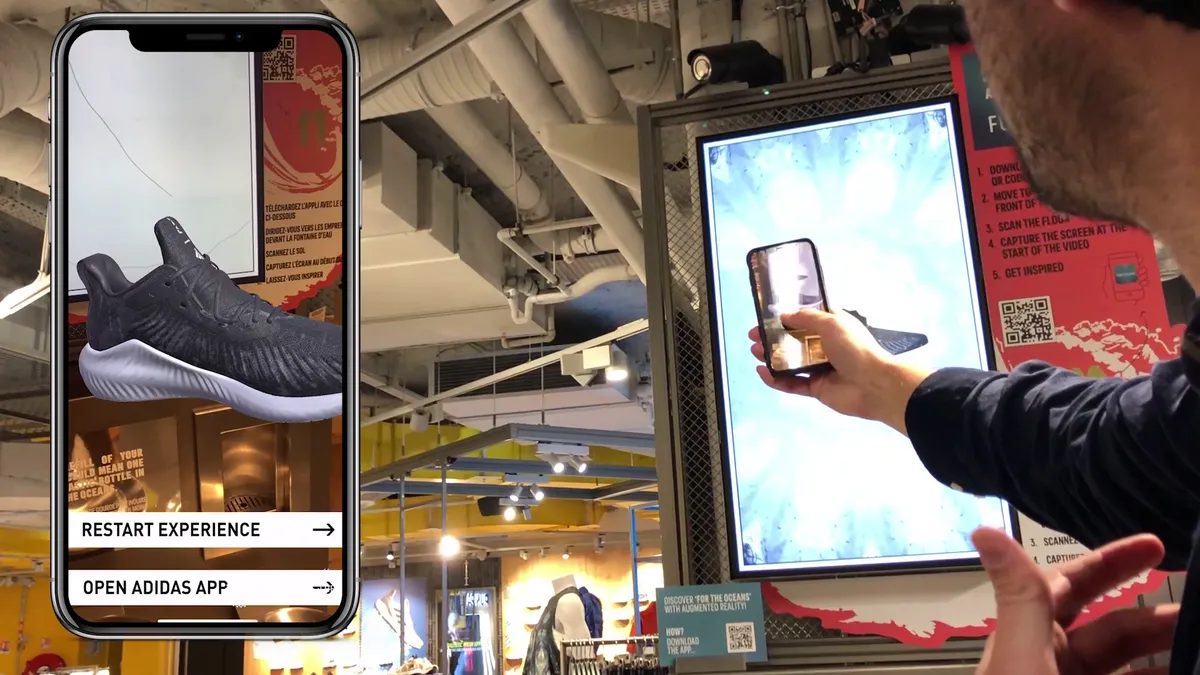Brief:
- Spending on augmented and virtual reality (AR/VR) will jump 79% to $18.8 billion worldwide in 2020 from this year as the retailing industry leads in developing new applications for the technologies. Retailers will spend $1.5 billion on AR/VR next year as they seek to provide a more engaging customer experience (CX), researcher International Data Corp. (IDC) forecasts in a new report.
- Spending on AR/VR is expected to rise at a compound annual growth rate of 77% through 2023. Consumer spending on AR/VR next year will reach $7 billion, and the biggest categories of VR expenditures by consumers will be gaming at $3.3 billion and features at $1.4 billion as VR headsets become more affordable, IDC forecast.
- The consumer segment will make up 37% of spending on AR/VR next year, followed by 23% for distribution and services, 19% for manufacturing and resources and 14% for the public sector. China next year will be the biggest market for AR/VR technologies with spending of $5.8 billion, followed by the U.S. at $5.1 billion, Western Europe at $3.3 billion and Japan at $1.8 billion, per IDC.
Insight:
IDC's forecast indicates spending on AR/VR is not expected to slow down over the next five years, although several key trends will emerge as consumers and businesses find ways to adopt the nascent technologies. AR/VR will provide a more immersive CX, making these technologies effective for marketing applications such as product demonstrations for cosmetics, fashion, automotive and home decorating brands.
IDC expects commercial sectors to lead spending on AR/VR, driven by lowering costs and the benefits of adoption becoming more tangible as full deployment is reached. Companies will increasingly be able to measure gains in productivity, efficiency, knowledge transfer, employee safety and more engaging CX through AR/VR.
The popularity of smartphones has helped to support consumer adoption of AR, while VR requires more expensive specialized hardware to provide an entirely immersive experience in a computer-generated environment. Tech companies are working to develop specialized hardware for AR that may replace smartphones for many consumers, as IDC notes in its report. The company predicts spending on AR hardware, software and services will overtake VR spending by 2023 as consumer adoption helps to boost growth by 165% a year.
AR headsets that let wearers see a digital feed of images and information as they move around the real world may one day replace smartphones for some consumers. Apple, Facebook, Google, Microsoft, Snap and Sony are among the tech companies that already sell AR headsets or have indicated interest in the burgeoning market through acquisitions and investments. Meanwhile, mixed reality apps — those that have AR/VR features — will more than quintuple their advertising revenue to $11 billion by 2024 from $2 billion this year as they reach audiences with more engaging mobile experiences, per a separate Juniper Research report.













